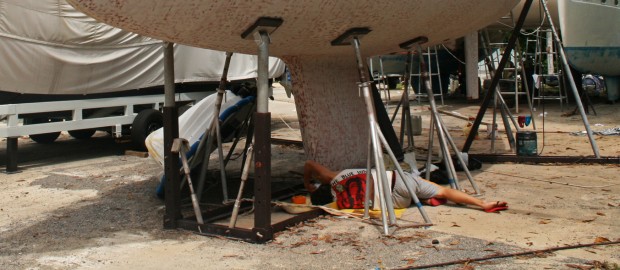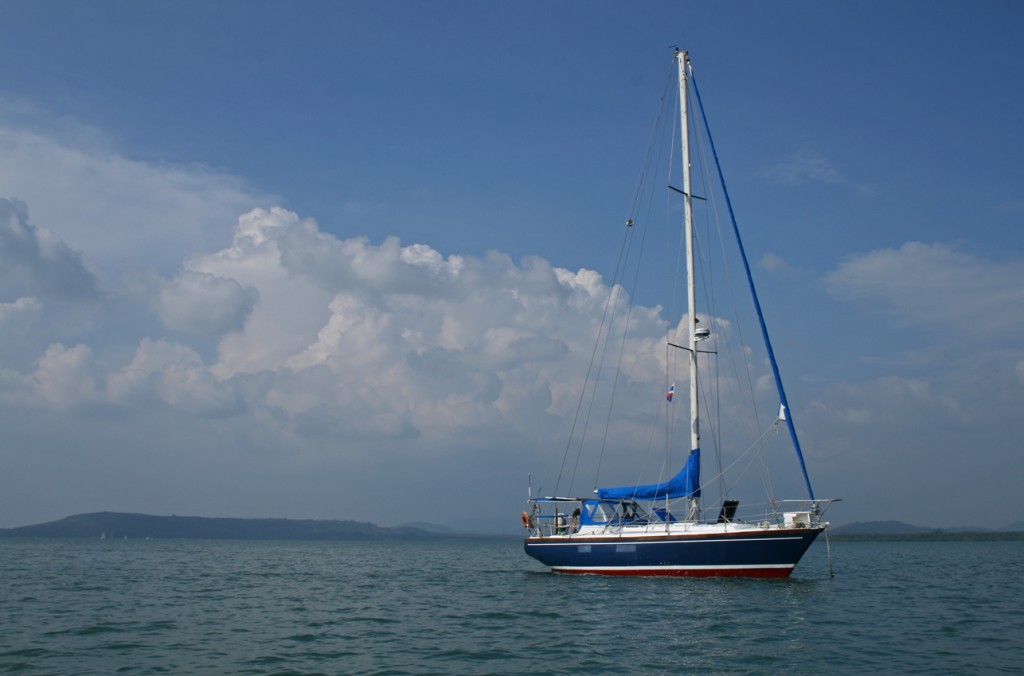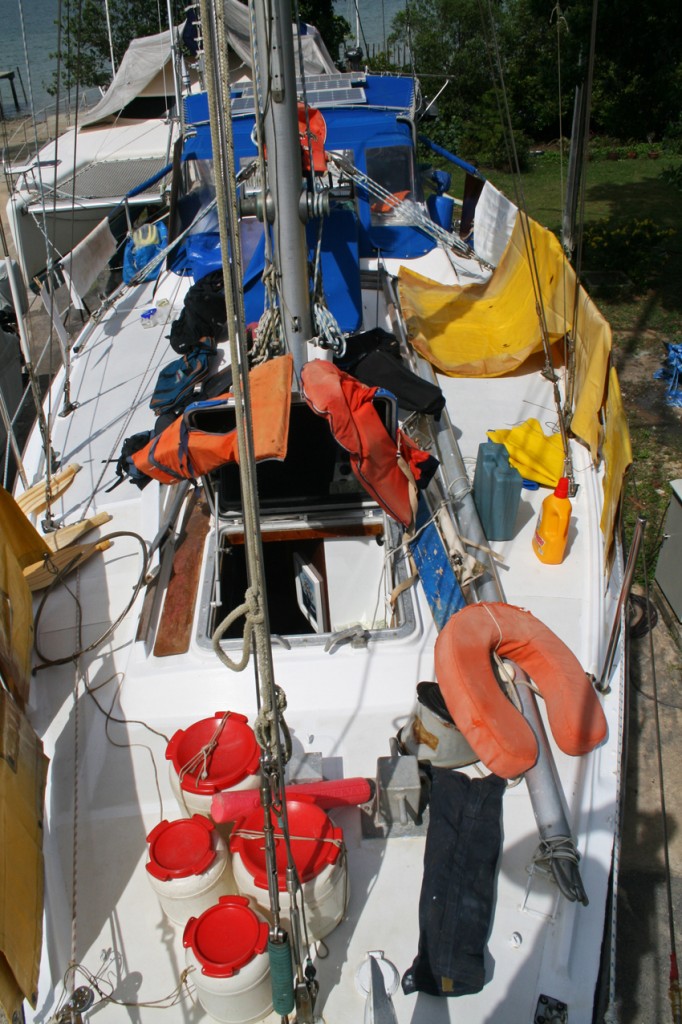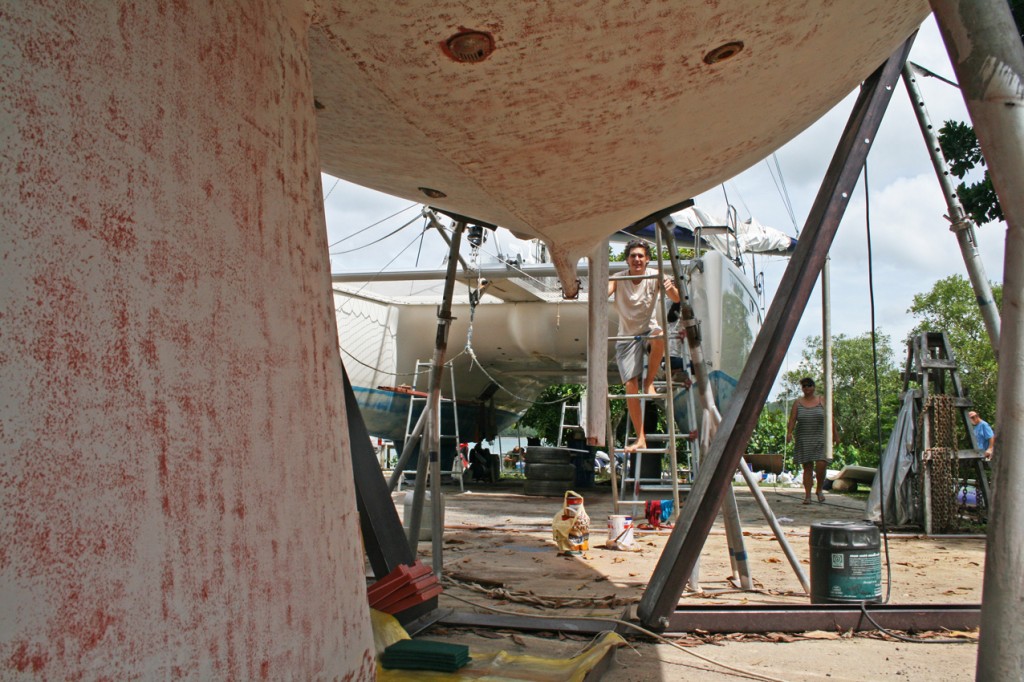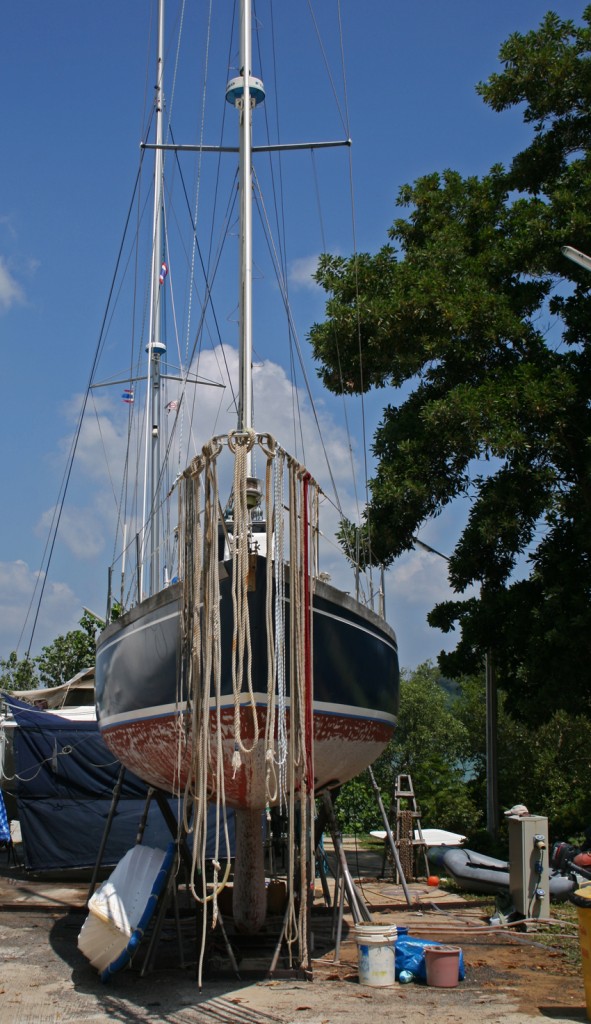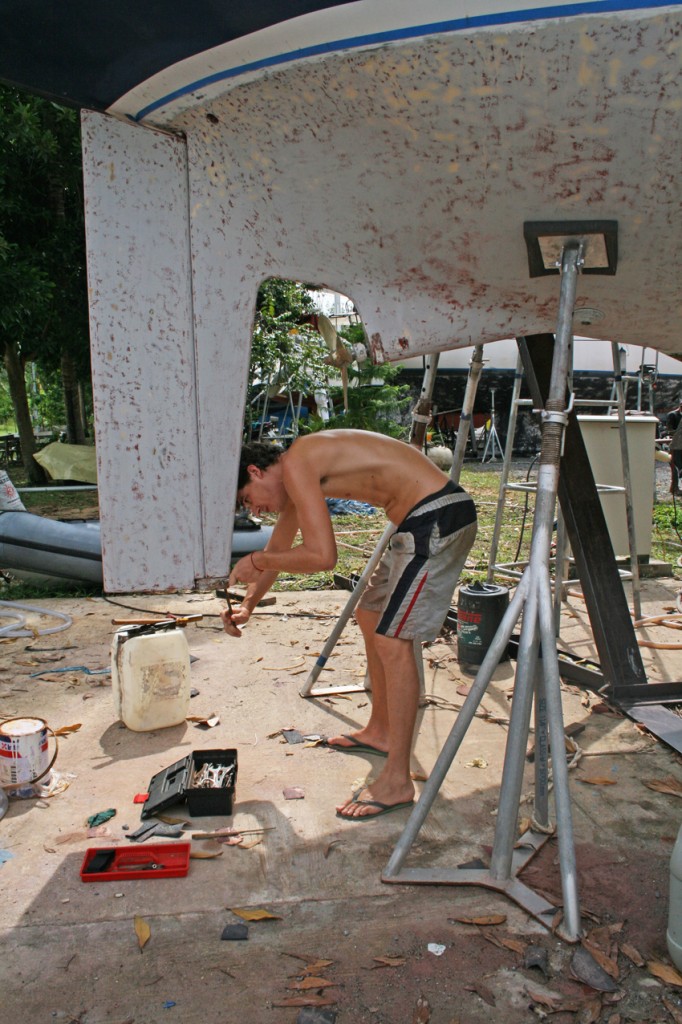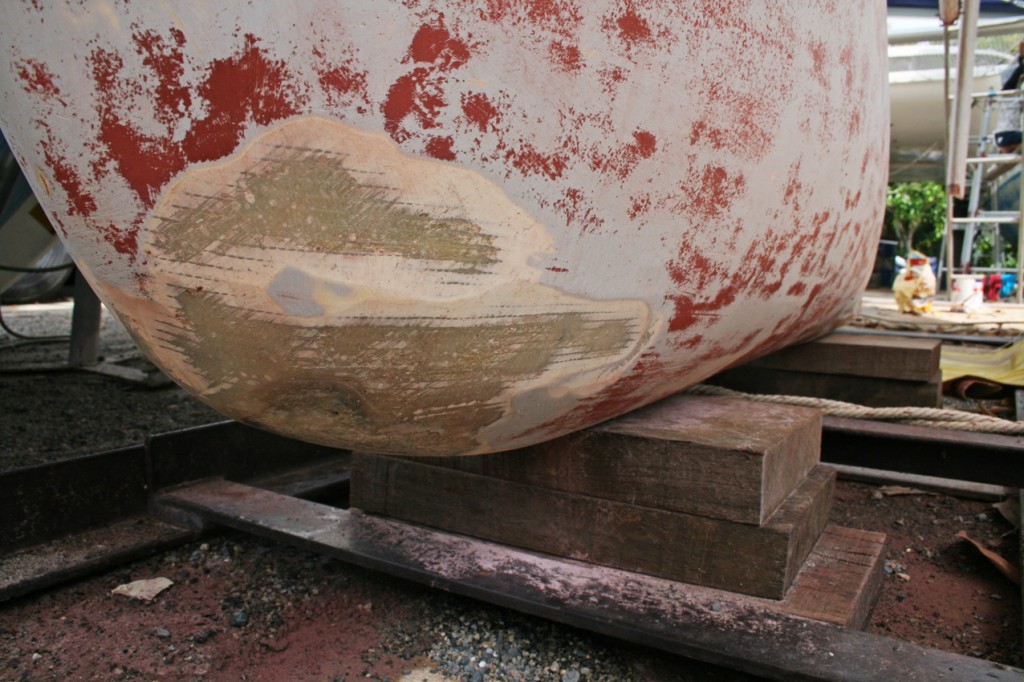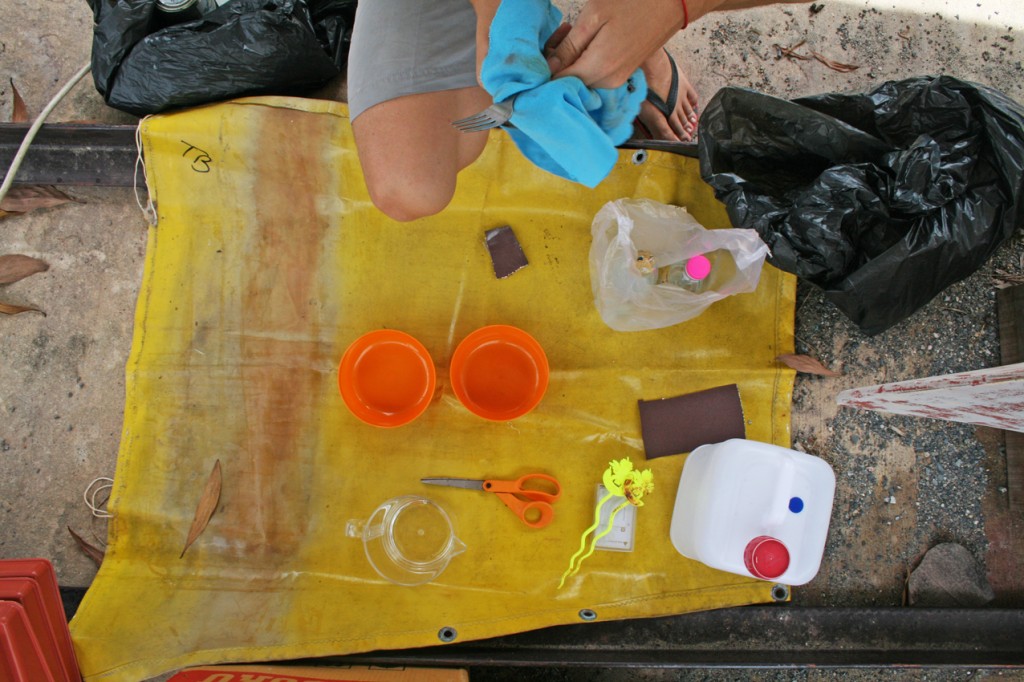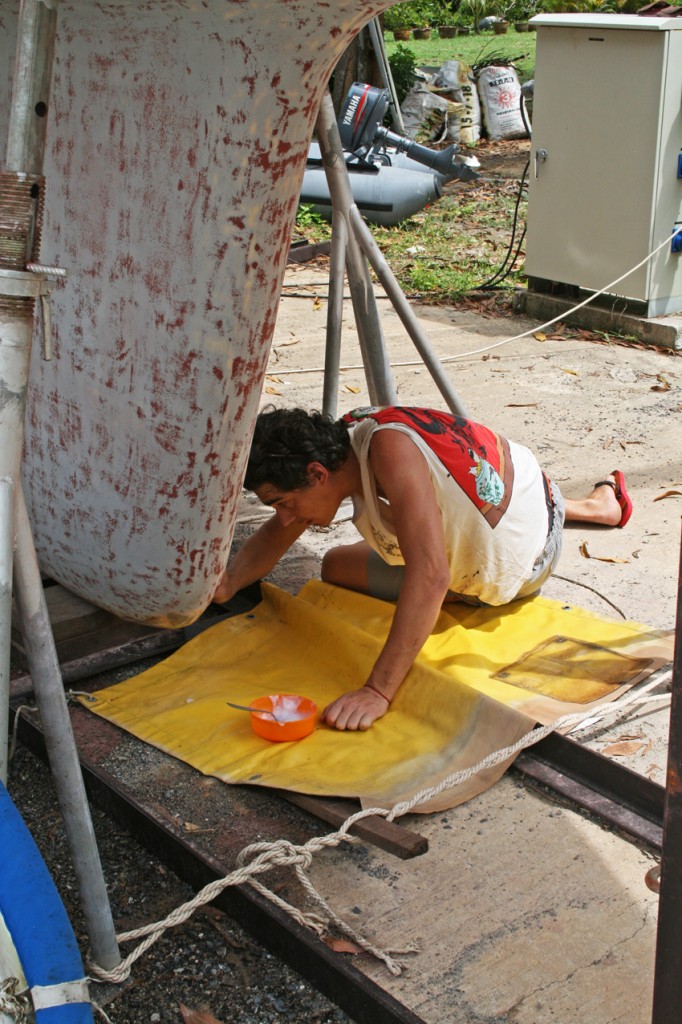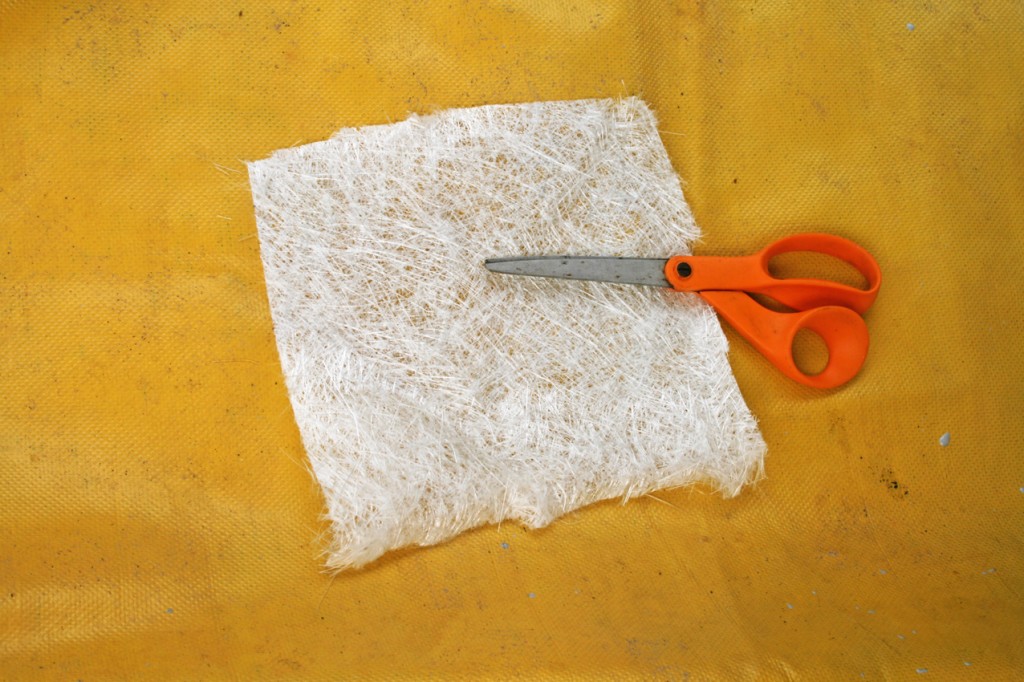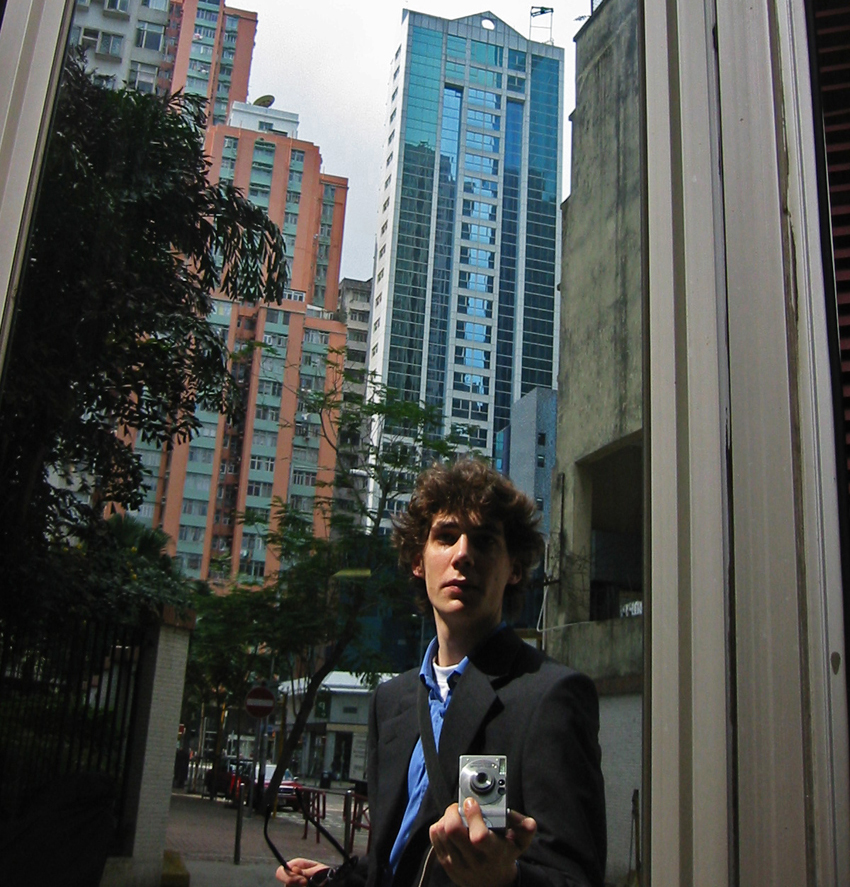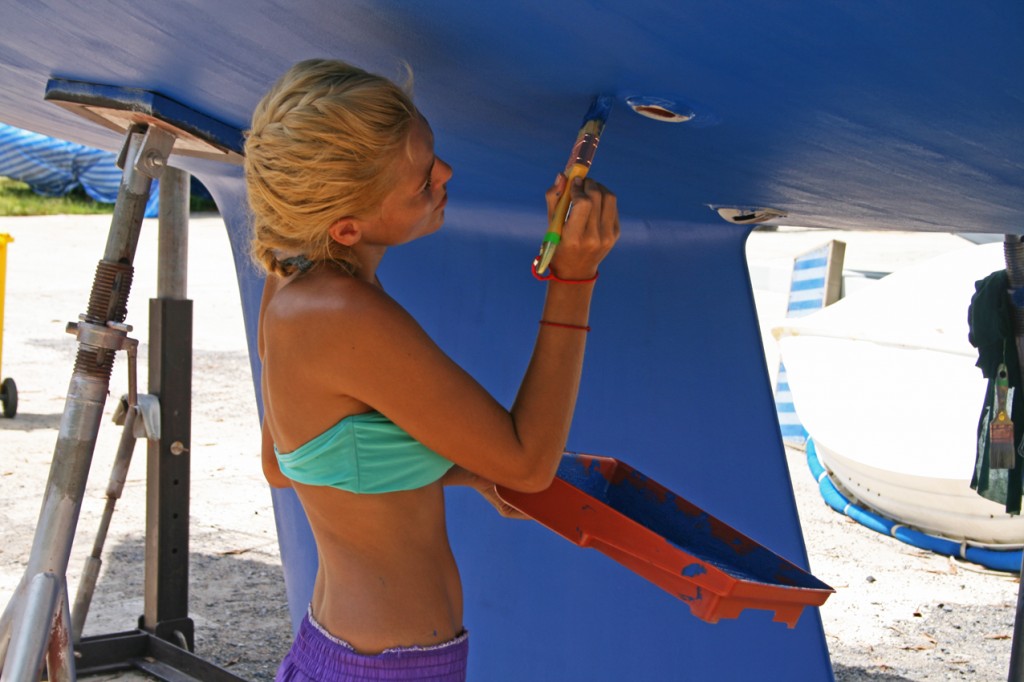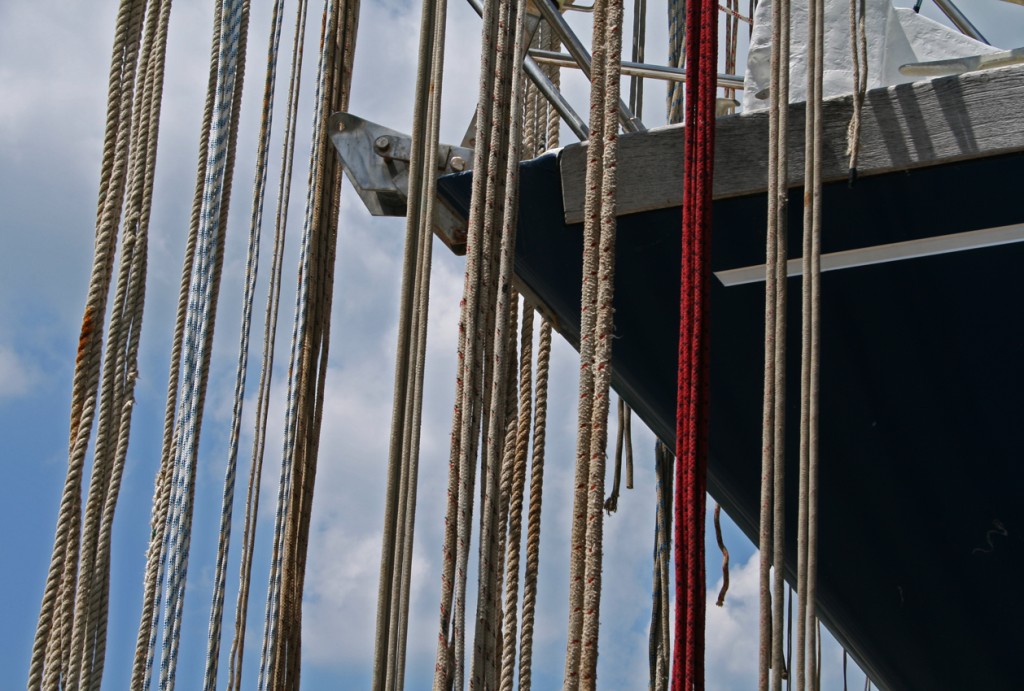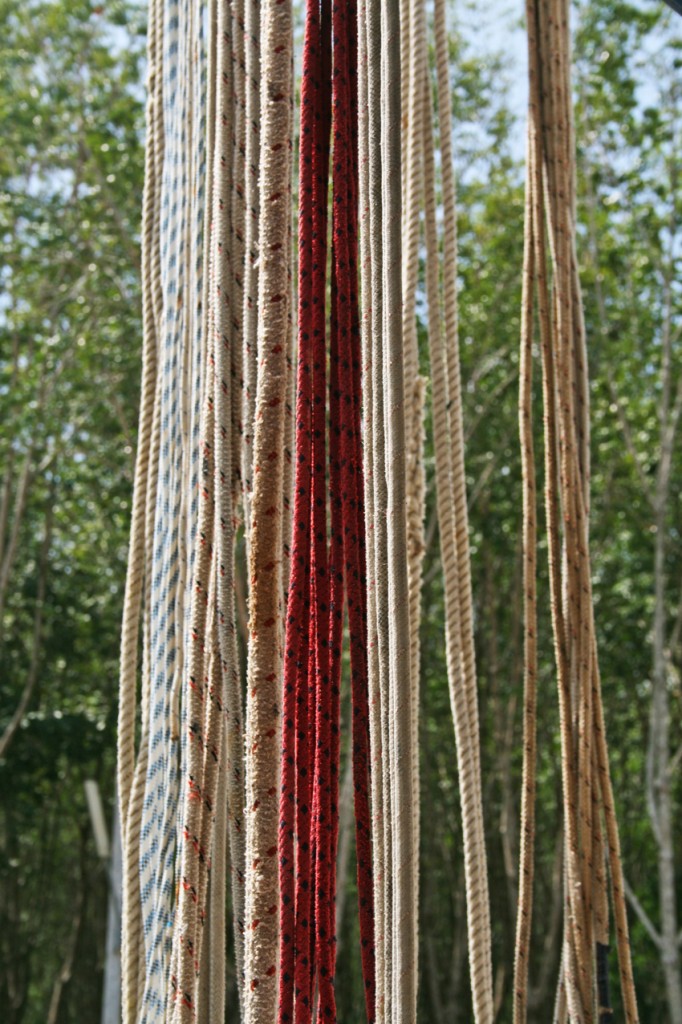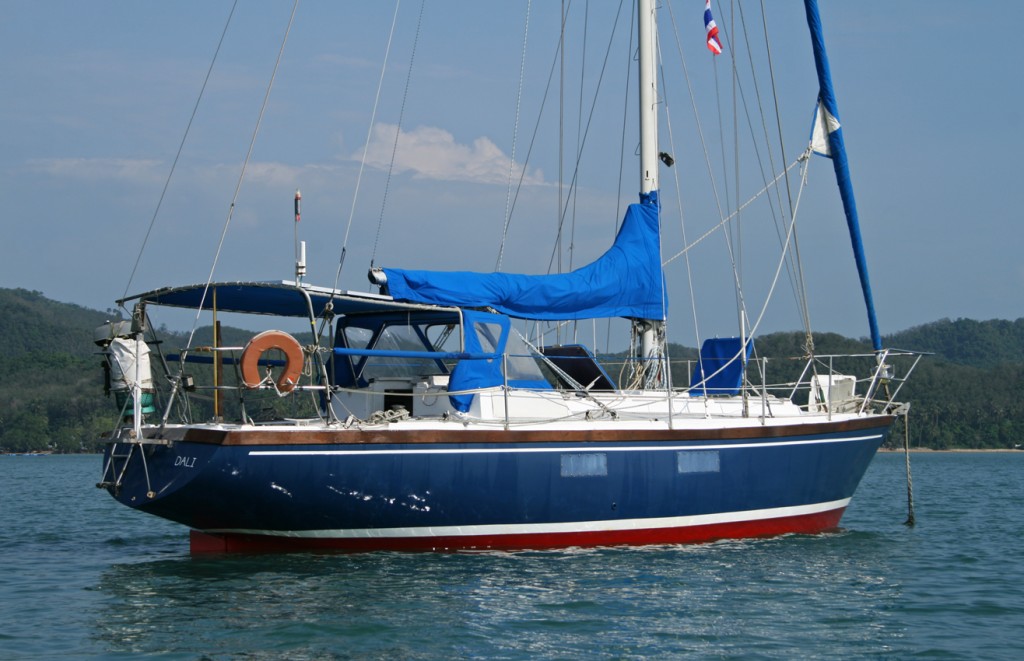Back in the water…The boat is finally moving again, gently cradling us with the soothing motion of the tranquil waters of Phang Nga Bay.
A month earlier, life on a boatyard.
It feels so good to be back on Dali and getting the boat ready for the coming year of sailing…but it feels so strange to live “on the hard”.
Dali is out of the water, sitting on land. We need to climb a ladder three meters above ground to get to the boat. I miss the motion of the boat. After months spent on Dali, we’re used to the gentle movement of the swell. But on the hard, the boat feels so unnaturally still.
We chose this small new boatyard because it is cheap, calm and relatively cool. Whatever the monsoon, NE or SW, we usually get a fresh cooling wind that limits the liters of sweat that drench us while working in the tropics.
It is difficult to explain how hard it has been to tackle the technical difficulties I have been facing since I decided to leave my comfortable and predictable job to live on a boat. When I acquired Dali, I knew how to sail and navigate, but when it came to mechanics, electrical systems, composite materials, paints, woodwork, plumbing, painting, sanding, gluing, isolating, screwing, drilling, polishing and so many more areas of expertise, I had no idea. It was scary to know that I would have to develop these skills quickly to be able to fix my boat on my own, in order to attain self sufficiency in deserted places and to try to limit the repair budget to a minimum.
I had a little insight from my years of sailing to the problems encountered on boats, and some theories about how to fix them. I had helped a lot of friends to do repairs on their boat, watched them use certain materials and tools. But clearly, the only way to improve my skills was to face the repair alone, with a lot of advice to pick from, but with my own hands and tools to operate.
Accomplishing a task for the first time on your own, with little or no guidance always involves a lot of stress.
I’ll try to illustrate this. Let’s say, you lightly kissed a rock with the bottom of the keel a few months back. Now on the hard, it’s fixing time. You must sand the area until you accomplish a smooth surface of fiberglass. That means you must know how to use a sanding machine, or just go for it. Then you need to prepare a mix of epoxy resin (two part – a resin and a hardener) and microballoon (micro sized glass bubbles used as a thickener) to fill all imperfection and, once sanded, prepare a smooth area to apply the fiberglass. This is no easy task for a beginner. Measurements must be taken, estimations are also a key. Doing this for the first time is obviously an unnatural feeling. It’s not easy to just go for it with no experience and technical learnings.
Then the epoxy resin is applied, the fiberglass cut to dimension pressed against it and absorbed in the resin. After it has dried for a while but is still sticky, epoxy/microballoon filler must be applied again, then sanded. Finally, another layer of resin and the primer paint are applied on top when the resin is still sticky. The theory seems simple, especially after you’ve seen someone do it in front of you, but until you put your hands at use, smeared with the products that you manipulate for the first time, the whole thing just seems extremely complicated to achieve.
The same feeling came upon me when I had to repair my diesel engine for the first time, only using phones and books. Or the outboard engine, that I keep fixing and discovering parts I haven’t dismantled and cleaned yet, or the engine shaft that I have to take apart on my own for the first time the other day. It often brings me back to the first business trip I did in South Korea in 2001. I was an intern in small French multimedia start-up in Hong Kong and replaced my trusting boss on a trip to Seoul. I had to meet with executives of the top Korean web businesses of the time to try to establish partnerships. It was organized in conjunction with the French Embassy and one of their translators was guiding me around the high-rise buildings of Seoul for five days. I was twenty-one years old, and terrified. I was wondering what I was doing there, what the justification for my presence on this trip was, since I had no prior experience. Everything seemed complicated and unnatural. I was putting a lot of pressure on myself, afraid of failure. But I forced myself to try.
Over the years I realized that there is absolutely no reason to be afraid of failure. It is such a natural feeling that keeps us from trying new things. The boat has been a good friend and let me experiment with the feeling. Today, I still stress out when something breaks for the first time. The other day a water pump was leaking and I had to fix it. It took three tries to dismantle it, clean it and put it back together to make it work. The frustration, the first time is annoying. The second time it is almost unbearable. But I have accepted that I might have to try it a third time, and if it doesn’t work, bring it to somebody and pay him to repair it. I’ve noticed with great surprise, that usually, the third time, it works.
Another important component of the fear of failure is the importance we put in what other people may think. What will they think of us if we can’t even succeed in a small task that is so easy for them to achieve? What will my friend, who’s worked on boats for 20 years, think of me if I live on a boat and can’t even fix a little water pump? What will my boss think of me if I fail in a task that he seems to accomplish with his eyes closed? We are often paralyzed by other people staring at us. I realized over the years that first of all: who cares? We are all the same human beings with the same fears, so why be ashamed? Second of all, I am a lot more impressed by people who try something and fail, then by people who stick to what they know best, and do it over and over again.
Since I left my comfortable job in Kuala Lumpur, I have tried my best to apply this philosophy to my everyday life. I have been trying a lot of new things without any knowledge: the refit of the boat; the filming and editing of my first documentary; I even participated to a reality TV Show based on interior design! In all these experiences, I had to teach myself how to use the tools and techniques at hand. Every time it felt like I was in front of a brick wall. I didn’t know how to start. I was afraid to start because I was worried I wouldn’t succeed. But I powered through my fears, and forced myself to do it.
Every task I tackle takes me a lot more time than it would have taken any experienced professional. The first result isn’t anywhere as good, and very far from my expectations. But I am building the necessary confidence to try again, and finally achieve a result that almost satisfies me. There is still so much more to learn. Every time I will have to achieve something new, the same feeling of fear will come back. But I will embrace it and power through. Force myself. Better try and fail than stand still…
Phil

